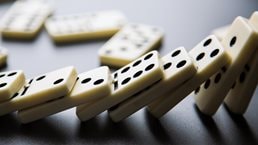There is a huge performance spread among sales reps. No matter which metric you use, the top 30 percent of reps will outperform the bottom 30 by as much as a factor of four.1 Closing this gap by helping weaker performers to operate more like high performers is a surefire way to drive additional revenue growth. But how to do it? The first step is to figure out what top sales reps do differently and identify overall best practices that all sales reps should follow.
A new data-analytics strategy can help. Using machine learning to mine behavioral data from sales and marketing, companies can survey large numbers of individual deals and sales rep interactions (emails, meetings, and phone calls, for example) to find patterns in completed deals and to generate insights on which behaviors can help win deals and boost customer satisfaction scores. These data-driven insights can then help sales leaders to steer and coach their sales force in a way that will drive both top-and bottom-line growth.
To demonstrate the possibilities, we recently used the revenue intelligence platform of people.ai2 to assess 40,000 deals and analyze the interactions of 315 sales reps in five companies in Europe and North America. We also used data from McKinsey’s Omnichannel Sales Insights Survey of August 1, 2019, which questioned more than 1,000 B2B buyers across a wide range of industries about their pre-COVID-19 preferences for interacting with sellers, and data from the recent McKinsey B2B Customer Sentiment Survey, which incorporates findings since the COVID-19 pandemic began.
Here are four of our findings.
Would you like to learn more about our Marketing & Sales Practice?
1. High-performing sales reps spend 22 percent more time with customers—and customers often prefer that time to be spent remotely.
Top reps spend just as much time on unappealing internal tasks as low performers, but they take the important step of putting in additional time to connect with customers, whether by email, phone, or in person. But how much more? Most sales organizations don’t quantify this additional effort, but doing so can give managers a clear benchmark for how low-performing reps should adjust their behavior.
Our analysis found that top sales reps spent 22 percent more time on external interactions than low-performers, and the interaction didn’t need to be face to face. Recent analysis shows that since COVID-19, interacting remotely is preferred by 70 to 80 percent of B2B customers. Managers can also encourage the habit of additional customer contact by minimizing the administrative and internal tasks for which all reps are responsible.
2. Face-to-face interactions don’t matter for closing both small and larger deals.
Face-to-face interaction with customers has long been the gold standard for sales, and the assumption has been that this is still true when large sums of money change hands. Customers often want to feel the sense of trust that develops from in-person interactions. But for a range of deal sizes, face-to-face meetings may not be necessary at all. At five companies we analyzed, 90 percent of small deals (under $100,000) were completed without any meetings. About 50 percent of small deals and 12 percent of large deals were closed with fewer than ten emails. Furthermore, recent analysis of sales behavior during COVID-19 reveals that 12 percent of companies are also comfortable closing deals of $500,000 to $1 million without face-to-face interactions, while 15 percent of companies feel that way about deals worth more than $1 million.
This is a critical insight for sales efficiency. Reps should not spend unnecessary time and energy on smaller deals. Companies with a range of deal sizes will want to make sure their reps are differentiating their interactions. Firms with many small deals should focus on developing specialized, well-trained teams of inside reps who send emails and make phone calls.

The domino effect: How sales leaders are reinventing go-to-market in the next normal
3. Top performers favor cold calls over cold emails, and video is emerging as a top channel.
Across the 40,000 deals we looked at, old-fashioned telephone calls were superior for getting people’s initial attention. In North America especially, high performers relied on cold calls more than unsolicited emails, making 82 percent more cold calls than low performers and sending 26 percent fewer unsolicited emails. In Europe, the difference was somewhat less pronounced: high performers made 16 percent more cold calls than low performers and sent 18 percent fewer unsolicited emails.
Since COVID-19 has increased the need to interact remotely, the power of video as a way to connect with customers has surged. Digital interactions with sales reps have increased 41 percent since the pandemic began, and online chat has increased 21 percent. Strikingly, new research shows that some 76 percent of sales leaders believe that remote sales interactions are equally or more effective than traditional in-person engagement in prospecting for new customers.
Knowing the value of phone calls and video lets sales managers coach reps to get better at them. Companies can develop specific cold-call training, including scripts or talking points, and focus on hiring people comfortable on the phone.
4. More deals are closed remotely in the United States than in Europe.
Successful deals in North America involved double the amount of phone calls and 40 percent more emails than in Europe. North American sales reps also did 32 percent fewer in-person meetings than their European counterparts. The root cause likely is the more regional nature of European sales organizations, due to Europe’s diversity of languages and regulations. However, since the COVID-19 crisis, sales organizations on both sides of the Atlantic have found that remote sales models for reaching and serving customers are as effective or more than traditional approaches (75 percent in Europe and 74 percent in the United States).
Companies that refine their sales strategies based on sales-behavior insights have seen an average improvement in sales productivity of 20 percent. Additionally, they benefit from an ability to bring new reps up to speed faster. Although communication with customers will always involve a large measure of intuition and emotional ingenuity, bringing science to this art is an essential part of creating a modern sales organization.


